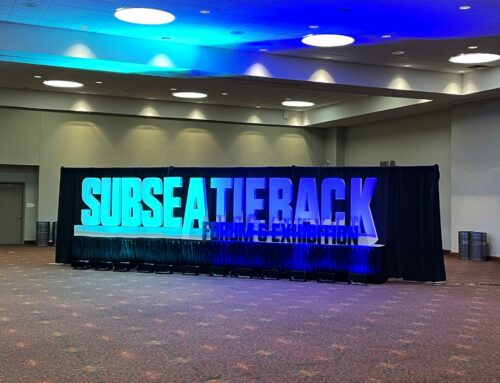BLOG: The Environmental Impact of Subsea Production Systems and the Oil & Gas Industry
March 18, 2021
Thirty years ago, in the aftermath of the 1988 Piper Alpha offshore disaster in UK waters in which 167 platform workers died, all the talk in the oil and gas industry was about safety. Many people were asking the same question: how can offshore personnel be removed from the direct impact of inherently hazardous oil and gas production?
One obvious answer was to remove more of the workforce from the process. This could be achieved in one of two ways: with unmanned/not normally manned platforms or with a subsea production system. The latter offered more potential benefits. Firstly, it removed more of the workforce from harm’s way – even unmanned facilities have to be inspected by human beings every so often. Secondly, in the vast majority of incidents involving underwater activities – notwithstanding the terrible events involving the Deepwater Horizon drilling rig – the control and/or safety systems are designed to shut down production almost instantaneously, preventing issues further along the pipeline at the host facility. Subsea was seen as an answer.
In addition, following the Cullen inquiry into the events at Piper Alpha, one recommendation was the installation of subsea emergency shutdown systems – an advance on the conventional subsea control system – on all major gas pipelines to prevent a repetition of having a vast inventory of natural gas like the one that fed the fire at Piper Alpha. Subsea was again the answer to this issue.
Climate Change and the Oil & Gas Industry.
Scroll forward to the present day, and the oil and gas industry is now focussed on a new and equally important issue – climate change. Terms like ‘net zero’, ‘decarbonisation’, ‘greenhouse gases’, ‘electrification’ and the like, are all part of the current vocabulary of what has become known as energy transition, or the move away from hydrocarbon-based energy. What could be more challenging than taking the ‘carbon’ out of the hydrocarbon industry?
Equally, the world’s energy system is not yet capable of providing all of the power requirements to meet industrial and residential demand without some use of hydrocarbons. The new key question, matching the serious one asked three decades ago, is how can the oil and gas industry face up to the conflicting demands of reducing its direct impact on the environment, whilst still producing sufficient oil and gas to meet the world’s energy requirements until renewables and alternative energy sources, such as hydrogen, are fully developed? The first step is to reduce and then eliminate emissions.
How Can the Oil & Gas Industry Reduce its Impact on the Environment?
Subsea systems themselves do not produce any emissions, although their host facility can do via flaring and power generation. This is why some companies have moved to emergency flaring only (in the event of an automatic process shutdown) and towards electrification of platforms and floating production systems – and subsea systems – with power coming from shore at the moment.
Norway is the leader in the electrification of offshore facilities, benefitting from the fact that more than 90% of its power demand is met by electricity produced by hydroelectric plants. The UK is moving more slowly towards such a power scenario. An alternative route to reducing emissions can also be achieved by integrating renewable energy systems, such as offshore wind turbines or even wave or current generating devices, with subsea production systems.
Some oil and gas companies are going even further. The French operator, Total – soon to be known as TotalEnergies as it tacks in a new direction in the changing energy world – has a design for a complete subsea production and process complex on the seabed. This concept includes not only power from shore to run all of the seabed machinery (pumps, separation systems, etc.), but also features an all-electric production system, including subsea Xmas trees, eliminating hydraulic fluid, another potential source of pollution, from its system. This concept is similar to the ‘subsea factory’ initiative presented by Equinor, the Norwegian state oil company.
There are other electrification ideas, as well. Companies that manufacture and deploy Remotely Operated Vehicles (ROV) for carrying out the underwater tasks formerly done by divers have also moved in that direction. A leading company, Oceaneering, has deployed an E-ROV for Equinor in association with a seabed ‘garage’ powered by batteries, no longer launching its underwater working drones by ship. Oceaneering says that this has saved 20,000 tonnes of CO2 emissions.
Another way to contribute to the reduction of greenhouse gases is to keep existing equipment working longer, and here is where Viper Innovations’ technology comes in. The manufacture of any new equipment, such as umbilicals, power cables, and control systems, will produce emissions which at best can be offset in some way. What if you can keep older equipment in the water longer through the use of life-extending technology, avoiding the need to replace it? Viper’s technology can help save money and prevent the release of more emissions.
Viper’s V-LIFE product helps Subsea Operators reduce their carbon footprint by avoiding unnecessary subsea interventions and extending the life of oil fields equipment. Find out more in our article: V-LIFE – An Environmentally Friendly Alternative to Replacing Failing Subsea Electrical Equipment
Viper’s obsolescence policy enables Subsea Operators to avoid the headache of obsolete IMD devices, mitigating the potential loss of production and high maintenance costs. Read more in our article: V-LIM Upgrade – Solving the Headache caused by Obsolete IMD Devices
Further related reading:
Learn More About Subsea Production Systems with Viper Innovations.
For more information on the environmental impact of the oil and gas industry, and how subsea production systems can help reduce this, please do not hesitate to get in touch with Viper Innovations today. We specialise in producing market-leading products that facilitate the electrical integrity of subsea control systems.




